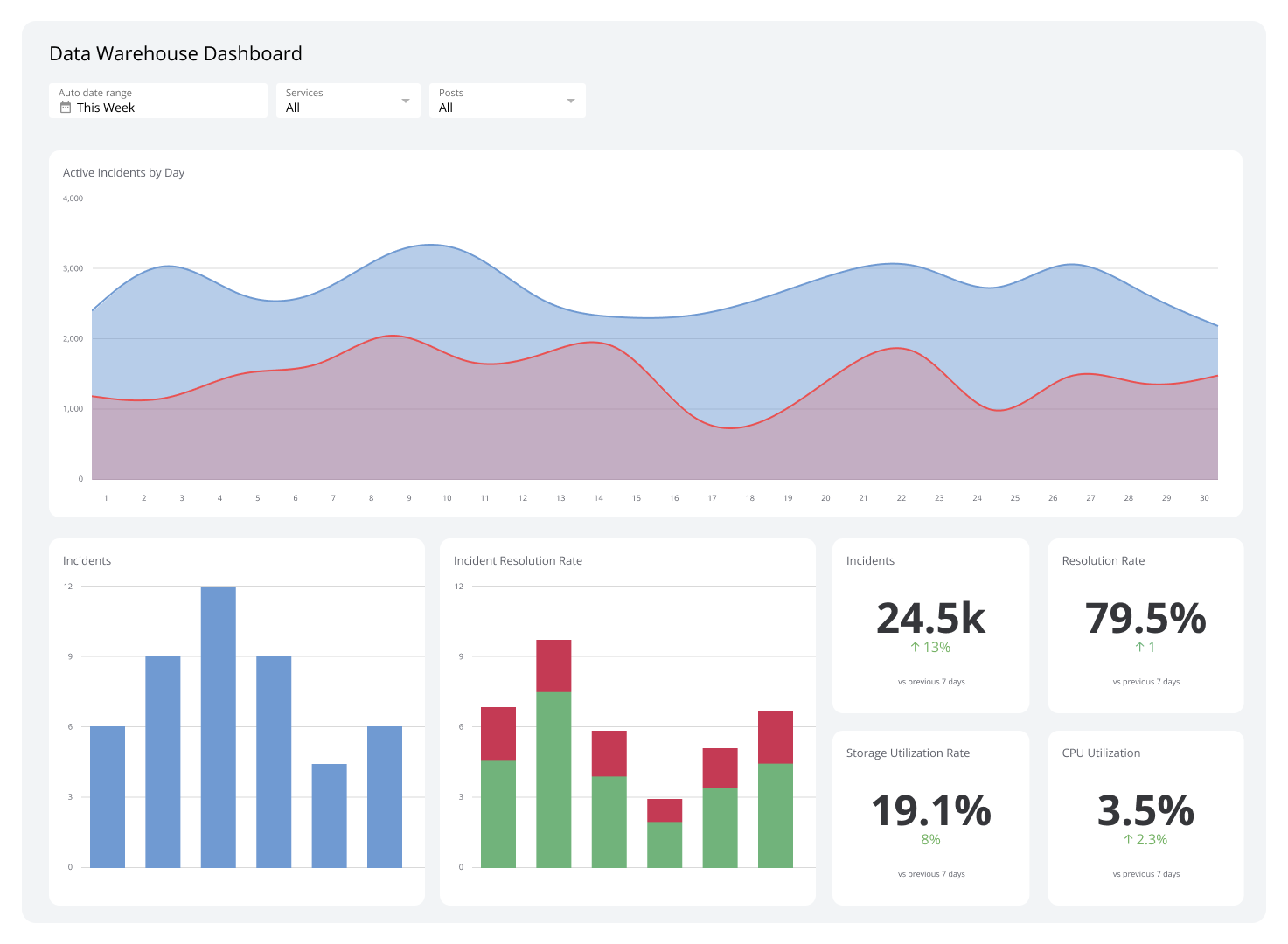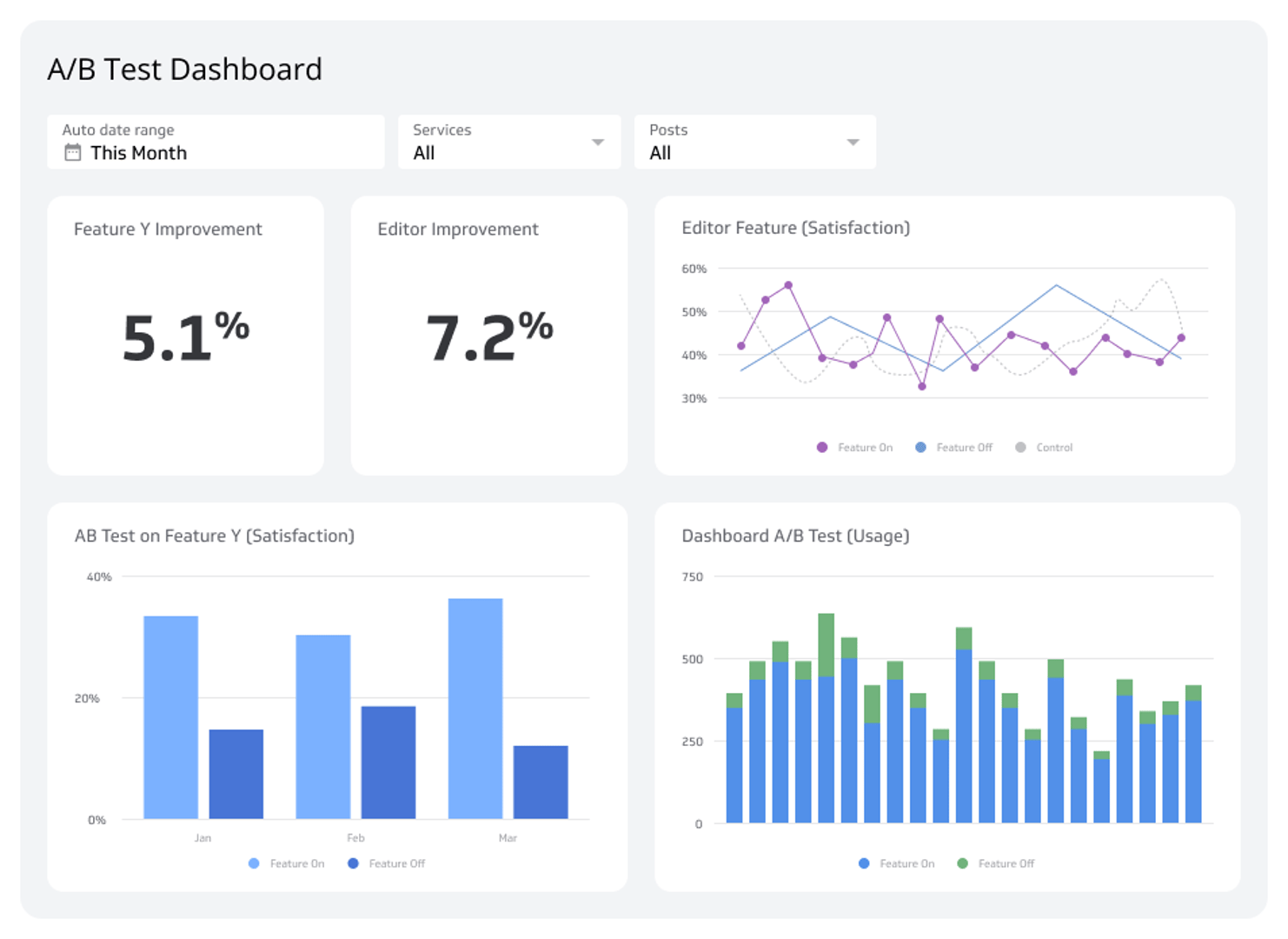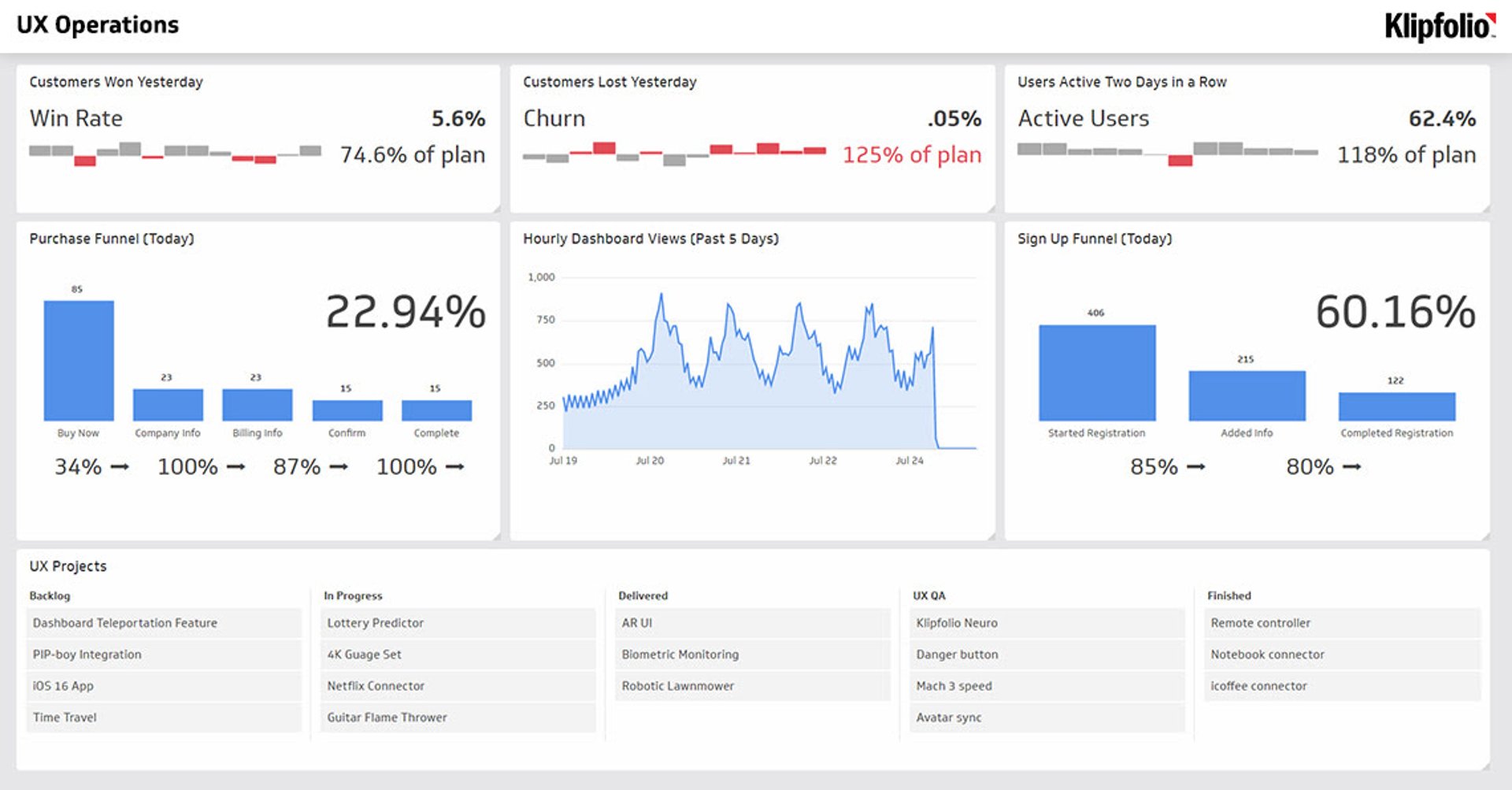Data Warehouse Dashboard
Data warehouse dashboards are visual interfaces that assemble and transform data into metrics and KPIs.
What is a Data Warehouse Dashboard?
A data warehouse dashboard collects information from a wide range of sources, including web services, databases, and AI. It then transforms this info into metrics and KPIs that data warehouse companies can use to gauge their health and optimize performance.
This dashboard focuses on real-time information, making it instrumental in keeping you updated on everything from storage utilization to data completeness rates. Like most dashboards, this one employs interactive charts, tables, and graphs to simplify complicated information.
Examples of Data Warehouse Dashboards
Operational Performance Dashboard
An operational performance dashboard provides real-time insights into the performance of data systems. It often showcases metrics and KPIs such as current query load, storage capacity, and active user session to help you quickly discover and address issues like slow query performance or approaching storage limits.
Who’s it for | Data warehouse managers, database administrators, ETL developers, data architects, business intelligence analysts, IT operations managers, data quality specialists, performance tuning experts, cloud infrastructure managers |
How often it's needed | Real-time, hourly, daily, weekly, monthly |
Covered KPIs | Current query load, storage capacity, query response time, storage utilization rate, CPU utilization, data loading throughput, ETL job success rate, system uptime percentage, user concurrent sessions, data security compliance score, data warehouse size, cost per terabyte stored, query optimization rate, data warehouse performance index, data warehouse ROI, data warehouse scalability index, real-time analytics capability score, active user sessions |
Data Quality Dashboard
A data quality dashboard provides a more in-depth glimpse into the accuracy, completeness, and consistency of data stored in the warehouse. It commonly highlights error rates, missing data percentages, and validation results.
This dashboard is instrumental in helping you handle quality issues. For example, it reveals areas with the most errors, where data is incomplete, and which processes cause issues, letting you catch and fix data quality issues before they impact your data warehouse operations.
Who’s it for | Data quality managers, data stewards, data analysts, ETL developers, business intelligence teams, data governance officers, database administrators, data architects, compliance officers, business stakeholders |
How often it's needed | Real-time, daily, weekly, monthly |
Covered KPIs | Data completeness rate, data accuracy score, data consistency index, data timeliness, data validity percentage, data integrity score, duplicate record rate, null value percentage, data quality trend over time, data reconciliation success rate, data validation rule compliance, data quality impact on business KPIs, data quality issue resolution time, data quality monitoring coverage, data quality alert responsiveness, data quality remediation success rate, data quality automation level |
Client Usage Dashboard
Client usage dashboards follow how your customers interact with the data in your warehouses. They show which datasets are accessed most frequently and by whom, allowing you to identify popular data assets and underutilized resources.
This type of data warehouse dashboard allows you to tailor data access permissions and optimize storage allocation based on actual usage patterns. This ensures that user experiences remain stellar and that your resources are appropriately allocated.
Who’s it for | Account managers, customer success managers, sales teams, data warehouse administrators, performance analysts, capacity planners, billing specialists, product managers, executive leadership |
How often it's needed | Real-time, daily, weekly, monthly |
Covered KPIs | Active user count, query volume per client, average query execution time, data storage utilization, concurrent user sessions, peak usage times, user adoption rate, feature utilization percentage, API call frequency, dashboard creation and usage, report generation frequency, user login frequency, session duration, resource consumption by department, query complexity distribution, client satisfaction score, churn risk indicators, revenue per client, client growth rate, data quality issue reports, cross-platform usage statistics, data sharing activity |
Security and Compliance Dashboard
A security and compliance dashboard reports on your data warehouse's security status and regulatory compliance. It showcases live KPIs that provide insights into access attempts, permission changes, and adherence to local data protection regulations. With the help of this dashboard, you can pinpoint security risks, guarantee regulatory compliance, and preserve the overall integrity of your data warehouse assets.
Who’s it for | Security analysts, compliance officers, data protection officers, IT managers, risk management teams, legal department, executive leadership, auditors, data governance teams |
How often it's needed | Real-time, daily, weekly, monthly |
Covered KPIs | Number of security incidents, failed login attempts, successful unauthorized access attempts, data access patterns, user permission changes, data encryption status, compliance violation alerts, data retention policy adherence, security patch status, vulnerability scan results, data classification accuracy, data access audit trail completeness, sensitive data exposure incidents, data breach response time, compliance training completion rate, third-party access monitoring, data masking effectiveness, data loss prevention alerts, multi-factor authentication adoption rate, security policy violation counts |
Simplified data acquisition for data warehouses
Data warehouse dashboards simplify data acquisition for your data warehousing company by automatically gathering essential information and converting it into easily understandable and actionable metrics and KPIs. This can help you keep customers satisfied, streamline operations, and maintain data quality.
Klipfolio offers customizable dashboards for all your data warehousing needs. Try it for free today!
Related Dashboards
View all dashboards


